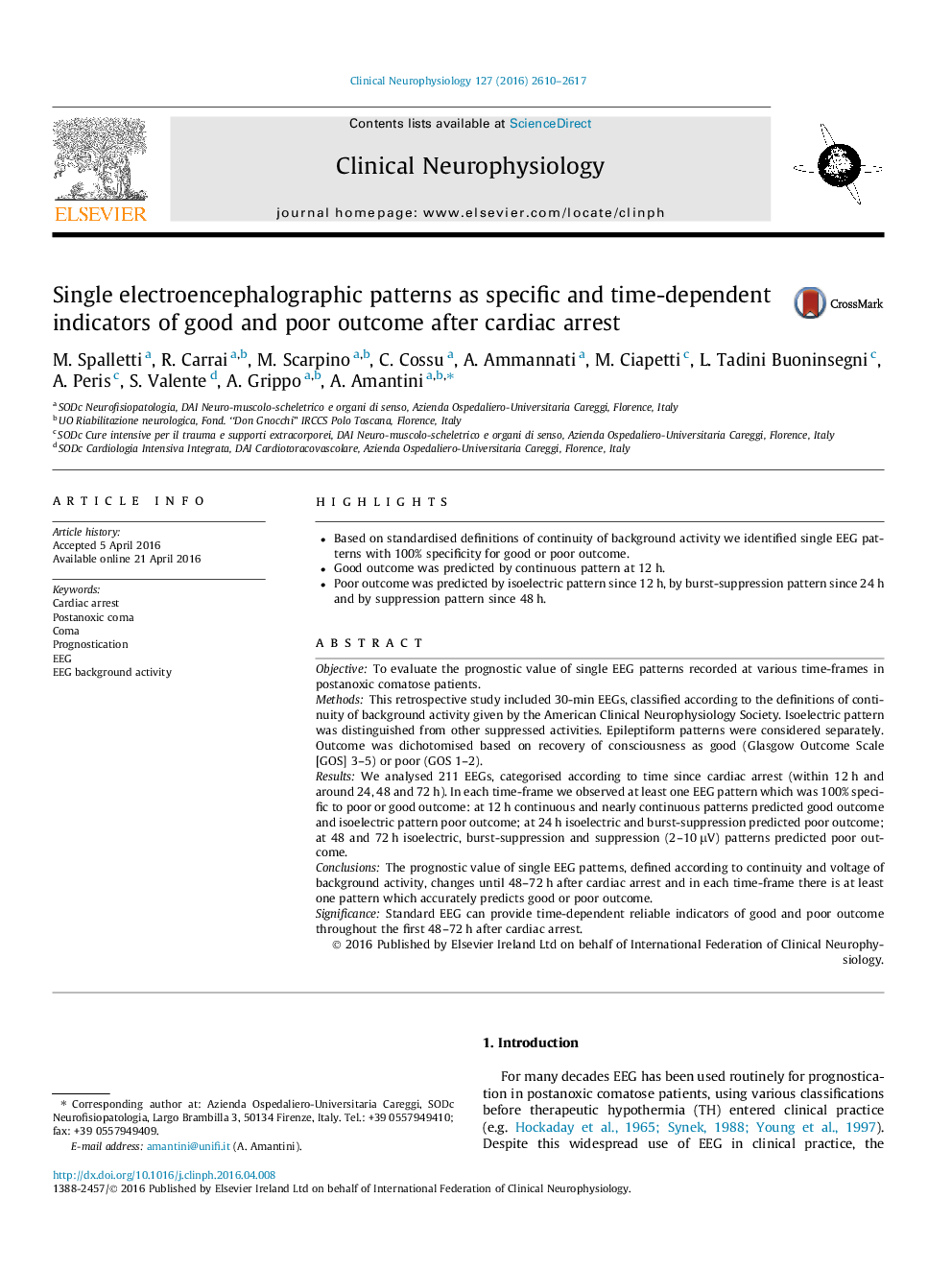| Article ID | Journal | Published Year | Pages | File Type |
|---|---|---|---|---|
| 6007482 | Clinical Neurophysiology | 2016 | 8 Pages |
â¢Based on standardised definitions of continuity of background activity we identified single EEG patterns with 100% specificity for good or poor outcome.â¢Good outcome was predicted by continuous pattern at 12 h.â¢Poor outcome was predicted by isoelectric pattern since 12 h, by burst-suppression pattern since 24 h and by suppression pattern since 48 h.
ObjectiveTo evaluate the prognostic value of single EEG patterns recorded at various time-frames in postanoxic comatose patients.MethodsThis retrospective study included 30-min EEGs, classified according to the definitions of continuity of background activity given by the American Clinical Neurophysiology Society. Isoelectric pattern was distinguished from other suppressed activities. Epileptiform patterns were considered separately. Outcome was dichotomised based on recovery of consciousness as good (Glasgow Outcome Scale [GOS] 3-5) or poor (GOS 1-2).ResultsWe analysed 211 EEGs, categorised according to time since cardiac arrest (within 12 h and around 24, 48 and 72 h). In each time-frame we observed at least one EEG pattern which was 100% specific to poor or good outcome: at 12 h continuous and nearly continuous patterns predicted good outcome and isoelectric pattern poor outcome; at 24 h isoelectric and burst-suppression predicted poor outcome; at 48 and 72 h isoelectric, burst-suppression and suppression (2-10 μV) patterns predicted poor outcome.ConclusionsThe prognostic value of single EEG patterns, defined according to continuity and voltage of background activity, changes until 48-72 h after cardiac arrest and in each time-frame there is at least one pattern which accurately predicts good or poor outcome.SignificanceStandard EEG can provide time-dependent reliable indicators of good and poor outcome throughout the first 48-72 h after cardiac arrest.
